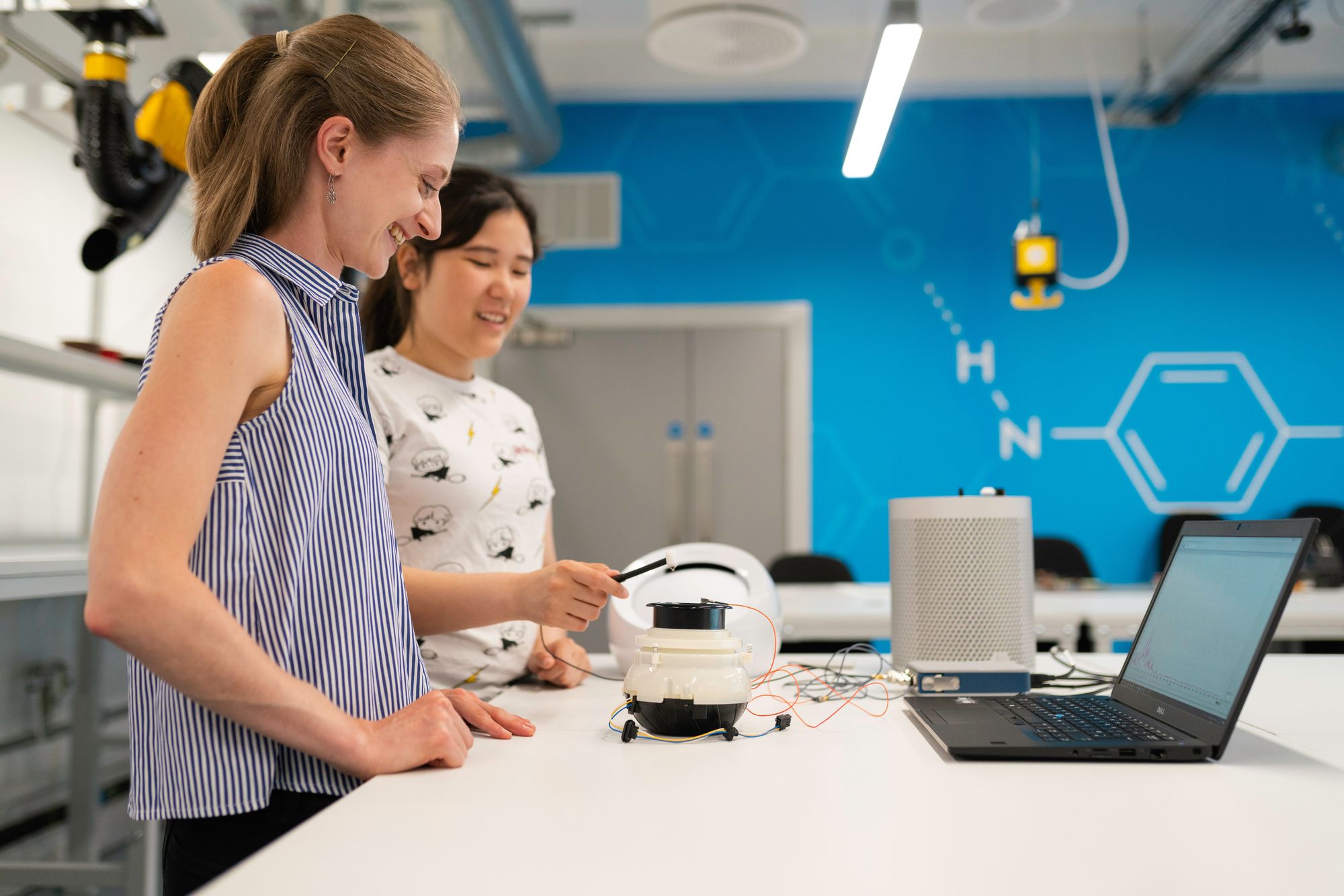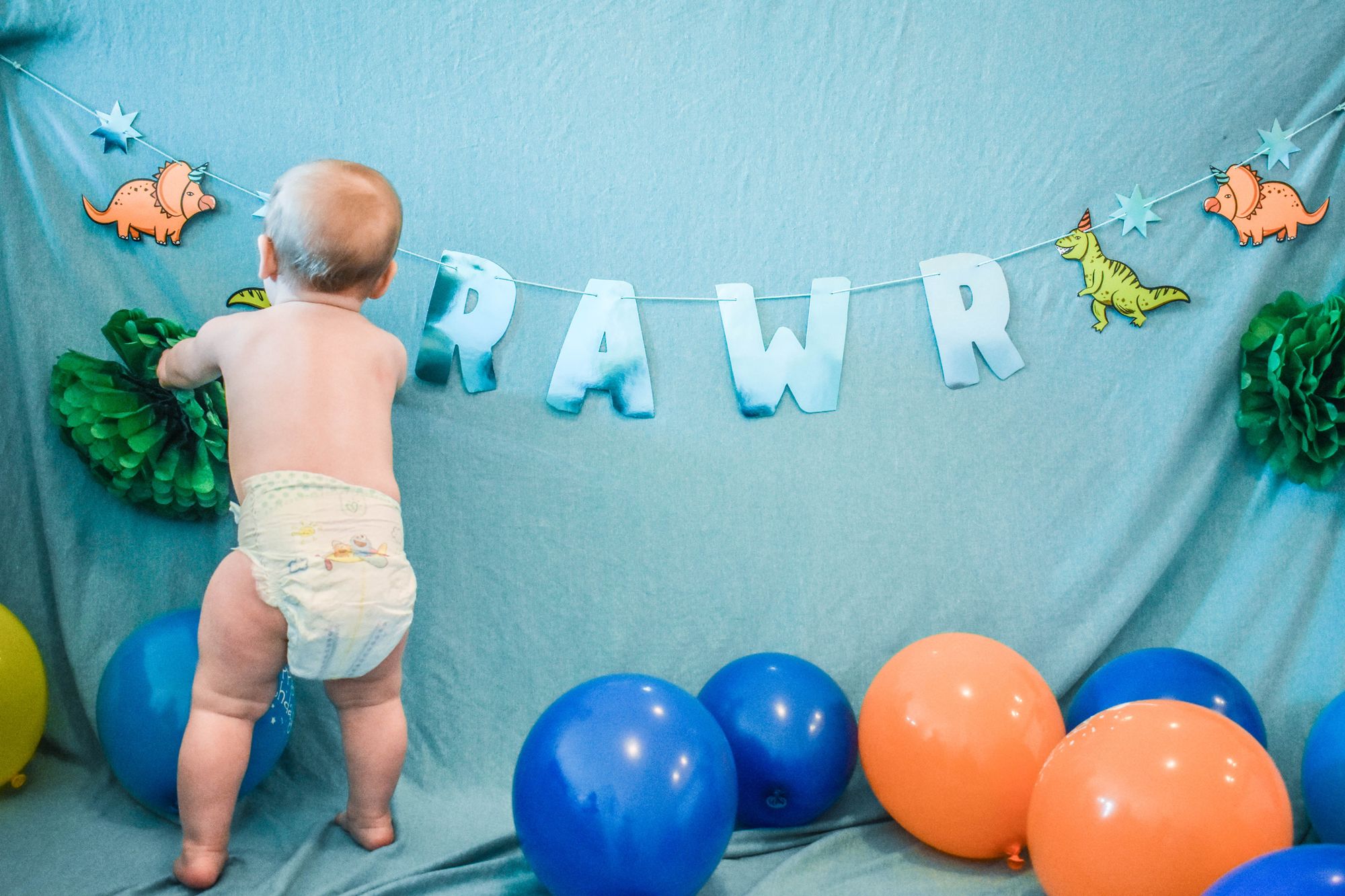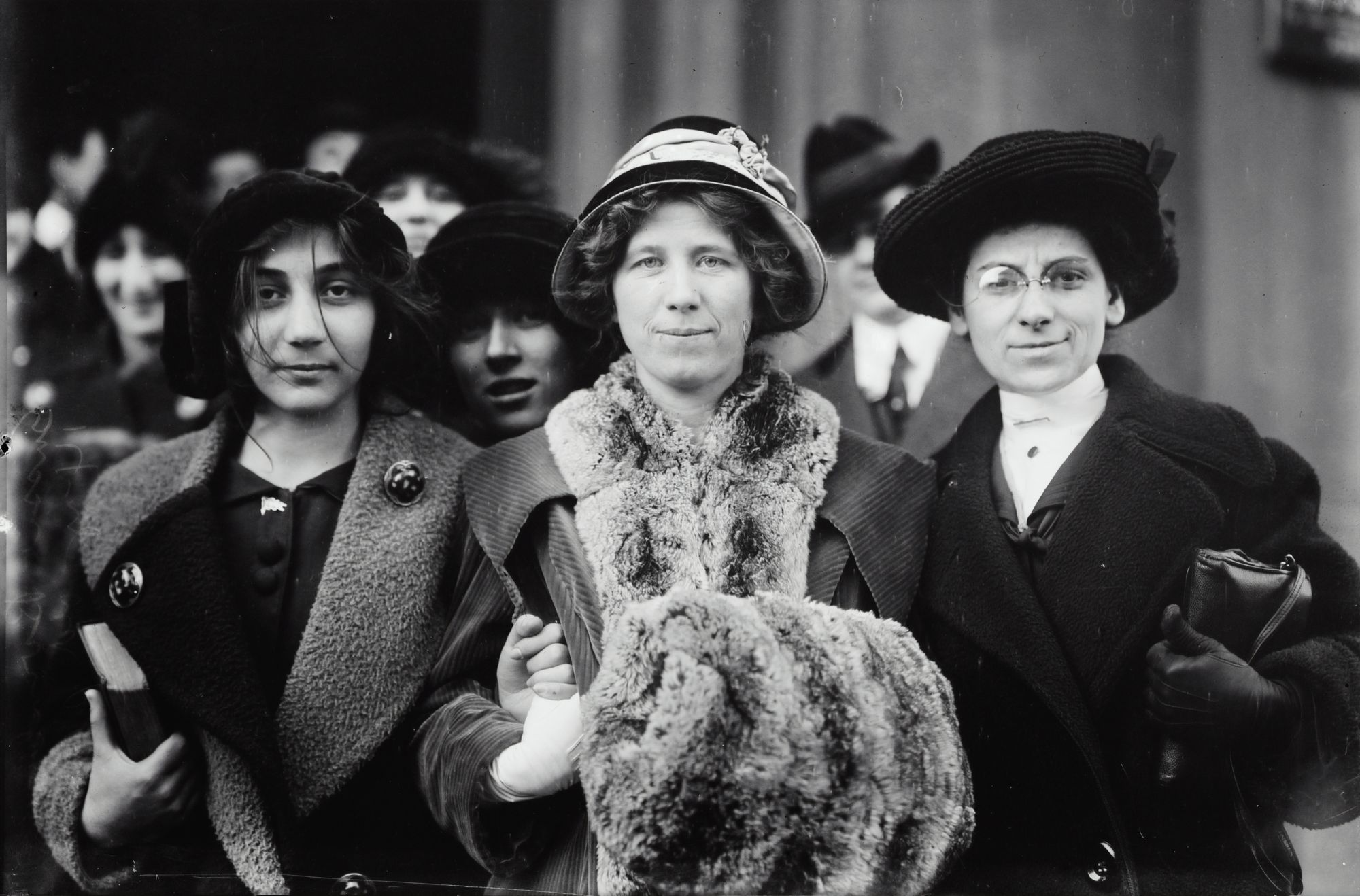
💡 Why women's innovation matter – to all of us
The year is 2021 and of course, men and women are equally capable. Or are we? Women inventors and their innovations matter in more ways than you can imagine.
Share this story!
Summary
📉What people think
Men are natural-born inventors and entrepreneurs, women not.
📈 Here are the facts
Analyzes show that women have a lot more uphill walking to do when it comes to invention and investments. Men - and even women at times - underestimate women's achievement and potential.
💡Optimist's Edge
More awareness about how different glass ceilings look like and more women active in education and industries where innovation is key will get the snowball in movement. And when it does, you want to be one of the early birds.
👇How to get the Optimist's Edge
Join the movement! Putting a focus on innovations made by and for women's needs by choosing prosperous paths when it comes to education, career, network, investments as well as consumer and healthcare decisions. Preferably, yesterday already!

📉 What people think
Men are better inventors and entrepreneurs. Or how come patents with female applicants more often are rejected (or when patents finally are approved they are weaker in juridical character) and start-ups led by women have more difficulties raising the money needed to grow the business?
📈 Here are the facts
Fewer women - but relevant - inventors
7-12 percent of global patents belong to women. In relation to that women constitute almost half of the population (49,5 percent) these are truly alarming figures. Also, less than a third of all international patent applications filed in 2015 included women inventors, according to an analysis from WIPO.
Are women less prone to innovation and invention? Not necessarily, however - in many fields where invention surfaces a background in natural science is often the case.
In most countries, far fewer girls than boys study STEM-subjects (scientific, technical, engineering, and medical subjects.) Meaning that a lower proportion of women work in the fields where most innovation is produced.
Historically, more men than women have chosen careers within science and engineering. But, and this is a big but: things are changing rapidly in this area. In the U.S, women STEM workers in the ’70s amounted to eight percent whereas in 2019 this number had risen to 27 percent according to data from UCB. And, whereas women today “only” are included in a third of all patent applications - the number was barely 17 percent in 1995.

According to The World Economic Forum, 30 percent of the world’s researchers are women. This is itself perhaps not enough, but it is already more than double the amount of patent holders. So the gap is evident. There is a lot of potential just waiting to be materialized into new business ideas, products, methods, and innovation at large.
Also, innovation and entrepreneurship tend to go hand in hand. GEM (Global Entrepreneurship Monitor) states in their latest report that women entrepreneurs represent one in three growth-oriented entrepreneurs in the world. Women are thus making significant contributions to the global economy and society. Approximately 274 million women are involved in business startups, 139 million women owners/managers of established businesses and 144 million women informal investors globally.
In some areas, the need to think outside the (male) box is more evident than in others.
Harvard economist Rembrand Koning, for instance, argues that the reason there is a lack of women’s health products on the market has to do with the lack of women inventing them writes Nature. Konig has also published a study that confirms the theory: few biotechnology patents are owned by women, and female inventors tend to a larger extent to patent health products for women. Inventor teams with women represent 16 percent of filed patents, yet are more likely than male teams to create women’s health products.

Women inventors solve women's problems
Elina Berglund, a particle physicist and entrepreneur in New York City, also interviewed in Nature, says she is not surprised by the findings. “It makes sense to me that one is more likely to spend time innovating or solving a problem that they have either experienced or are close to.”
Diapers illustrate this.
Today, 95 percent of babies wear them yet when Marion Donovan, the inventor of the disposable diaper, put forward the idea, sixty or so years ago, it was met with skepticism and uninterest from the male-dominated manufacturing industry. How many years would it have taken for diapers to become disposable if they had not been developed by a woman in the 40’s?

The Atlantic retells the experience: "I went to all the big names that you can think of, and they said, 'We don't want it. No woman has asked us for that. They're very happy and they buy all our baby pants,'" "So, I went into manufacturing myself." (Atlantic quoting an aired interview from 1975).
Other more recent examples of valuable inventions from woman inventors include methods and products that address conditions found only in women such as breast cancer, postpartum preeclampsia, and fibromyalgia. The Conversation has analyzed the uneven distribution of invention and concluded: "had male and female inventors been equally represented over this period, there would have been an additional 6,500 more female-focused inventions. In percentage terms, equal representation would have led to 12 percent more female-focused inventions".

However, as much as women invent for women, the scope of invention is not confined to women's needs either.
US Today lists 50 significant inventions women are inventors of, such as the fire escape, dishwasher, electric hot water heater. All of which are central to daily life.
In addition, there is also a whole lot of essential groundbreaking inventions discovered by women but with a man’s name written on them, ranging from "dark matter" to the early computer. However, we'll just have to let this part of the problem slide for now though...
The gender gap is real – but can be closed
So, how come we do not see more women inventors? There might be more than one answer to this. When Yale researchers studied the application process surrounding patents in the U.S they found that women face more challenges than men throughout the process.
The researchers took into account 2.7 million patents issued between 2001 and 2014 and analyzed maintenance fee payments, prosecution histories, the full text of patents, as well as how a patent claim was altered during the patent process. The results suggest that “essentially, women inventors must pass greater degrees of scrutiny,” one of the researchers Kyle Jensen was quoted in Yale Insights.
Also, women-led start-ups receive a minority of global venture capital. Harvard Business Review points out that the all-time high level of 2,8 percent (!) yes you did not misread the number, fell down during the pandemic to the even more staggering low 2,3 percent.
Nevertheless, as more research in this area is carried out and awareness of how automatic behavior and treatment function, change is bound to happen. In fact, it is already taking leaps in this direction in front of us each and every day.
Companies working with tackling bias in recruiting situations are taking control when it comes to evaluating performance.

💡 Optimist’s Edge
But most importantly, more women are taking place in the driver's seat and taking the lead both at work and at home - meaning more active decision-making in a number of areas.
Forbes outlines how women also drive 70-80 percent of all consumer decisions. In a consumer-oriented society, this means a lot.
Also, sources suggest that women make as much as 90 percent of household healthcare decisions. (Yankelovich Monitor).
Women are also:
- achieving more top positions in several areas of society, however, this differs greatly between countries and societies. Being in decision-making positions and having more influence will naturally mean that more women-related issues will have greater chances of turning into a business and drive innovation.
-(perhaps most importantly for the scope of innovation) pursuing careers in research and STEM fields, where a lot of the inventions (no pun intended) stem from.
There are already numerous initiatives within the larger gender equality paradigm. Especially for women entering university or work-life, many traditional male education programs and workplaces are branding themselves as an attractive education and career opportunity for women. Invention will soon become the next battlefield, where business organizations and universities will be betting over each other in search of women's perspectives and experiences.
There is also a more profound shift in society, where younger generations take for granted that equality is the foundation of everyday life and will not accept falling victim to old norms.

Health care and safety are examples of where gender bias has been detected. It is a fact that a majority of treatments and medicines originally have been tested on men. Another fact is that men and women are biologically different in ways that affect the way we handle diseases and in some ways also react to medicines. Covid-19 is one recent illustrative example of this. As is the example of safety belts in cars, which have a 17 percent lower protection rate for women.
This means that there is work to be done to better understand, for instance, how female symptoms work as well as discovering and evaluating medicines and treatments more tuned to women. Also, addressing the whole range of exclusive women's symptoms and diseases without using the male-norm as a fundament is an ongoing challenge.
The time-consuming process of planning for, carrying and nurturing a baby’s needs is an area where technological and medical - as well as psychological support is still - comparatively within an advanced democracy - underdeveloped.
With more knowledge about what the consequences of not recognizing vital differences between women and men can have in a myriad of ways, the way forward is clear: more women innovators and inventors are wanted - and will be welcomed with even wider open arms during the years that come.

👇 How to get the Optimist’s Edge
Getting the edge mostly has to do with tying together the different strings. Remember, we live in a time where several somewhat paradoxical situations are equally present:
There are still plenty of areas of women's lives that have not been recognized as worthy of improvement.
There is a growing interest and engagement from women for STEM subjects, from school via university to careers. More female researchers and workers within these areas will mean more female inventors.
However, there is also a need for more developed recognition about biases and how ideas, inventions, and business decisions are evaluated based on gender. It will not be enough to have more women actively innovating if the inventions are not fairly handled and accepted by institutions and formal processes.
Women are strong consumers and dominant decision-makers in health care and household economics, this means that this is a great place to use power to change things that need to change. So what can you do?
- Put your money where it is used best. Choose organizations that address and work for change when it comes to gender equality. Gender Equality Funds is a great tool when it comes to banking and investments.
- Embark on a career path where you can make a difference - and get funding along the way. Ex research programs with a focus on recruiting the underrepresented.
- Choosing a male-dominated STEM job will make you get noticed - and ahead - as you will be bringing more fresh ideas to the table.
- Put pressure on relevant communities. Ask your local politicians what they are doing to ensure that women's ideas and innovations are handled gender-neutral.
- Connect with or start your own initiative. There is a decent amount of inspiring initiatives out there already, which not only identify new potential entrepreneurs and business models but also put solid funding in them which makes all the difference. See for instance successful Swedish investment company Backing Minds. As long as women’s innovation and entrepreneurship are not realized to the same extent as mens’ are, there sure is room for more companies detecting new potential out there. So, what are you waiting for, why not get started right away?
- Networking – start taking traditional networking seriously: HON is an exclusively female network that offers dialogues between women in all strands of professional life. Instead of giving away business or mentoring opportunities to random male colleagues, the network enables women to grow a personal and professional women-only network. Join today, sign-up for the newsletter and download HON app and apply for membership.

The most economical suggestion - start your own humble transformational journey! Just by asking the question: what perspective is missing here, will give you the opportunity to evaluate if there are parts missing in your private or professional life which is in need of improvement and will make you more open to new things.
Who knows, perhaps you will be the one to invent, produce or invest in the first seat belt which actually fits and is customized for real and even pregnant women - and is available in any given car. Or, find a cure for some of the stigmatizing women's diseases?
The next level of the Optimist´s Edge:
When more research is conducted integrating women's needs from the start this will lead to a better situation for both women and men. Fewer women will need to suffer treatable effects from childbirth, infancy years, and other periods of life due to their gender.
Making it possible for women to participate more on an equal level and embracing inventions from both men and women will have an impact on several areas of society. Not only will the quality of invention in large be raised. Other positive outcomes could mean less sick leave for women, more healthy years, and higher quality and satisfaction of life, as well as healthier relationships at large. And these are just some starting examples of what awaits...
❓ What more can you do?
Please share more ideas with your fellow Premium Supporters in our Facebook group.
By becoming a premium supporter, you help in the creation and sharing of fact-based optimistic news all over the world.


